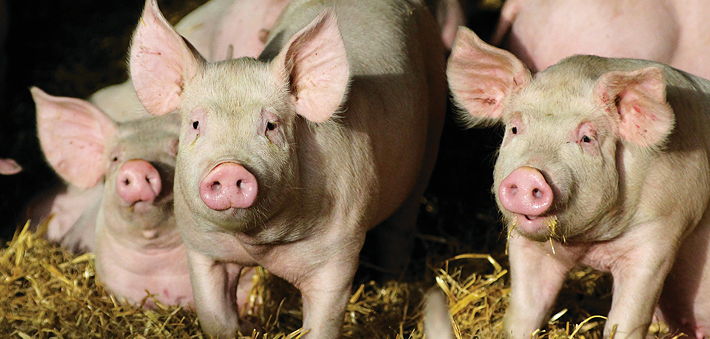AHBB Pork has published a ground-breaking new report outlining the findings of objective animal welfare assessments covering nearly 5.5 million pigs over three years.
AHDB’s Real Welfare report is the culmination of a unique, self-funded partnership between farmers and vets, developed in response to the pig industry’s desire for science-based evidence of welfare standards within the sector.
The initiative’s findings, based on on-farm veterinary assessments covering 5,463,348 pigs over three years, representing 40.5% of all pigs on farms on the day of assessment, have been described as ‘very encouraging’ by NPA chief executive Zoe Davies.
The Real Welfare project looks beyond production systems, focusing on objective science-based indicators of the welfare of animals, themselves, rather than on the environment the pigs are kept in.
Key findings from the biggest study of its type anywhere in the world included:
- Only 0.07% of pigs were identified as needing to be moved to a hospital pen for special treatment and, on more than three-quarters of farms, no pigs required hospitalisation
- Just 0.18% of non-hospitalised pigs were lame and, on more than three-quarters of farms, no pigs were lame
- Only 0.14% of pigs had severe tail damage and, on more than three-quarters of farms, no pigs had severe tail damage
- 70% of pigs had their tails docked, lower than in most other European countries where tail docking is permitted
- 26% of pigs had severe body marks
- 62% of pigs had access to substrate, most of which was straw, and 32% of pigs had access to objects.
Over the years Real Welfare has been in operation, all measures of physical injuries, except tail damage, decreased. This demonstrated an improvement to the welfare of individual animals in the British pig herd, the report’s authors said.
The report concluded: “The outcomes provide evidence of high levels of welfare and stockmanship in the British industry. They confirm that farmers look after their animals well and deal with pigs that need extra attention to safeguard their well-being.”
To read the report, click here
Further assurance
AHDB chair Meryl Ward said the British pig industry has always taken a proactive approach to animal welfare
improvement.
“The British consumer has an enviable choice of purchasing options based on production systems,” she said. “This scheme will provide them with further assurance of the high welfare standards across all systems on British farms and the industry drive for continual improvement.”
Defra Chief Veterinary Officer Nigel Gibbens said: “This report is a positive industry initiative and one which will provide a practical way of monitoring changes and promoting welfare improvements over time, as well as supporting the industry in demonstrating welfare standards to consumers and retailers.
“The scale of the Real Welfare assessment scheme is unique and the significant amount of baseline data generated will aid farmers’ understanding of where to target their efforts to make welfare improvements.
“This includes the need to provide suitable environmental enrichment, to reduce the amount of tail docking and prevent tail biting. It is only with continued collaborative effort that farmers, the wider pig industry and veterinarians will be able to deliver welfare benefits for pigs and provide assurance of better welfare to the consumer.”
Real strength
NPA chief executive Zoe Davies said the report had highlighted areas of real strength in on-farm husbandry standards and identified areas for improvement.
She said: “This is a truly ground-breaking report, which is the result of the pig industry’s desire to obtain a real picture of the welfare of pigs of our farms.
“Overall, the results are very impressive and confirm what we already know about the pride that British pig producers take in ensuring their animals are properly looked after.
“The assessment highlighted very low levels of tail-damage, and while the proportion of pigs that have had their tails docked at 70%, may appear high, it is far lower than other major pig producing countries, where the level often nears 100%. Despite this positive figure, however, the industry is committed to continuing to drive further reductions in the number of pigs that have docked tails.
“This farmer led initiative demonstrates to consumers exactly how high the welfare on our farms actually is and stems from a desire to be open and transparent with the public over how their food is produced, despite increasingly damaging and fake messaging from anti-meat eating organisations.”




